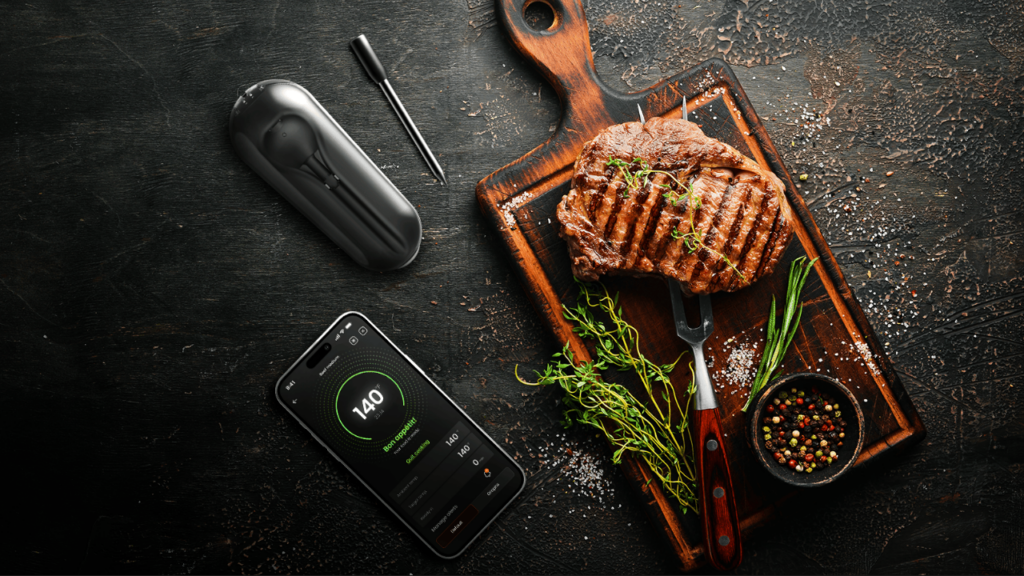Rare meat, often synonymous with tenderness and intense flavor, divides meat enthusiasts. Some consider it the pinnacle of cooking, while others are put off by its bloody appearance. But what does this term really mean? Is it truly blood that you see in rare meat, or is it a widely spread myth? This article explores the science behind rare meat to separate fact from fiction.
What is Rare Meat?
When we talk about rare meat, we refer to meat cooked so that it remains red in the center. This light cooking is prized for the juicy texture and preserved flavor it provides. But is the bright red liquid that runs from your steak really blood?
Muscle Composition
To understand what happens when meat is cooked, we first need to look at the composition of muscle. Meat consists of muscle fibers, connective tissues, and myoglobin, which is a protein that stores oxygen in muscle cells and gives meat its red color.
Myoglobin: The Main Player
The reddish liquid you see in rare meat is not blood but myoglobin mixed with water. Unlike blood, which is mainly contained within blood vessels, myoglobin is found within muscle fibers. When the meat is cut, it is this myoglobin, released from the muscle cells, that creates the illusion of bleeding.
Cooking and Color
The color of meat changes depending on the cooking temperature due to the transformation of myoglobin. At lower temperatures, myoglobin remains red, giving the meat that “rare” appearance. As the temperature rises, myoglobin denatures and changes color, turning from red to pink, and then to gray-brown when the meat is well-cooked.
The Blood Myth
The myth that rare meat contains blood likely stems from the visual similarity between the red liquid in meat and blood. However, during slaughter, most of the blood is drained from the animal’s body, leaving primarily myoglobin and other fluids in the muscle tissues.
Pros and Cons of Rare Meat
Pros:
1. Flavor and Tenderness:
Rare meat retains much of its natural juices, offering a richer taste experience and a more tender texture.
2. Nutritional Value:
Light cooking can preserve certain heat-sensitive vitamins, such as vitamin B12 and zinc.
Cons:
1. Food Safety Concerns:
Undercooked meat can pose risks of bacterial contamination, notably from E. coli and Salmonella.
2. Personal Preferences:
As some consumers find the appearance and texture of rare meat unappetizing.

The Meat it 3: The Solution for Safe Rare Meat
For those who love their meat rare but are concerned about food safety, the wireless thermometer Meat°it 3 is an ideal solution. Here’s why:
1. Cooking Precision: The Meat°it 3 allows precise monitoring of the meat’s internal temperature in real-time, ensuring that the meat reaches the exact temperature needed to be both tender and safe to eat.
2. Wireless and Easy to Use: With its wireless technology, this thermometer is easy to use and doesn’t interfere with cooking, whether in the oven, on the grill, or in a pan.
3. Real-Time Notifications: Connected to a mobile app, the Meat°it 3 sends instant notifications when the meat reaches the desired temperature, preventing overcooking or undercooking.
4. Enhanced Food Safety: By ensuring that the meat reaches temperatures recommended by health authorities, the Meat°it 3 significantly reduces the risks of bacterial contamination, allowing you to enjoy rare meat without worry.
Conclusion
Rare meat is a delicacy for some and a topic of debate for others. Science clearly shows that the red liquid in rare meat is not blood but myoglobin. Understanding this distinction can help appreciate rare meat in a new light and make informed culinary choices. For those who wish to combine their passion for rare meat with safe practices, the Meat°it 3 is an indispensable tool for mastering the perfect cook and ensuring an optimal taste experience. Check out what Tasting Tables has said about making dinner parties easier using our wirelesss digital thermometer The Meat°it 3 and more. Happy grilling!
